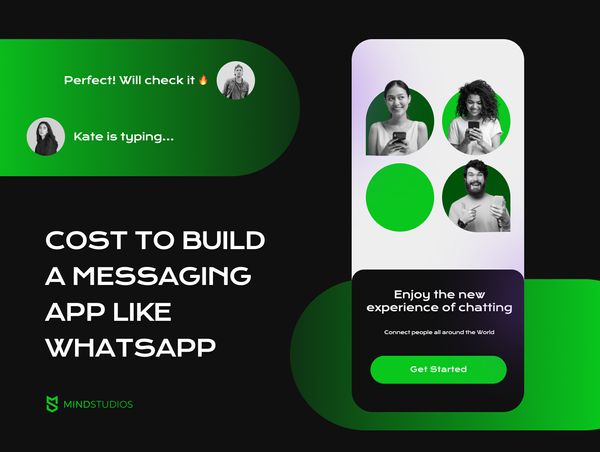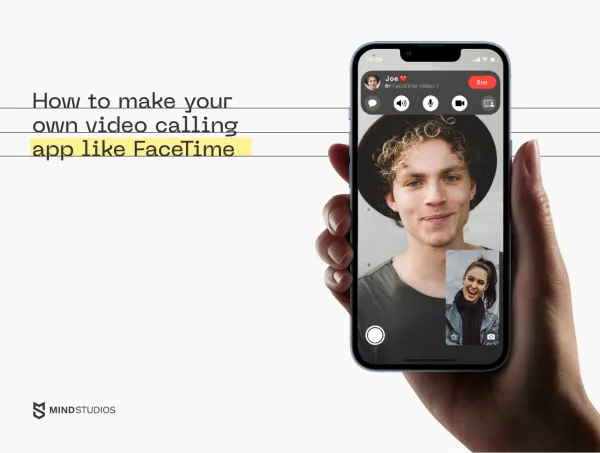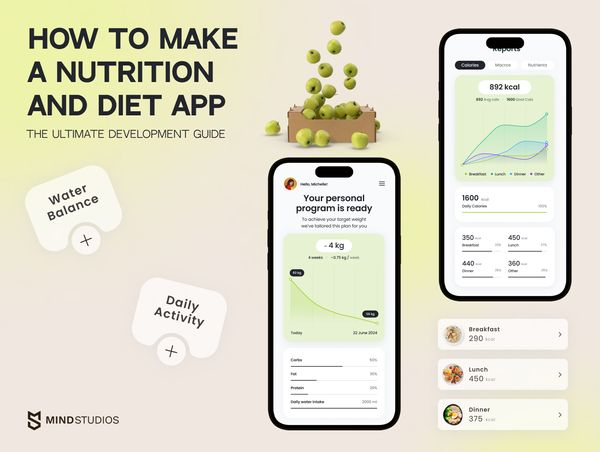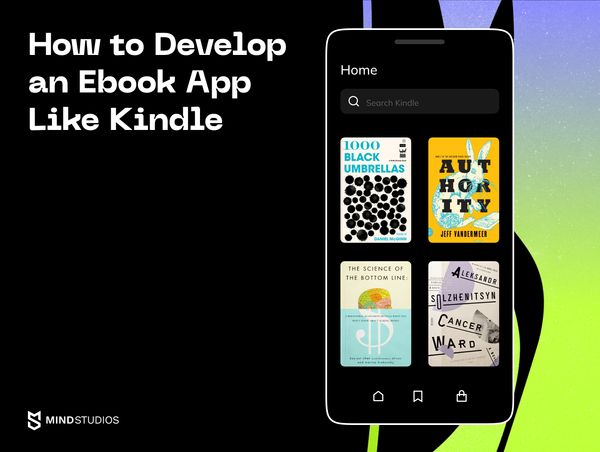
Snapchat in No.4 most used social media app among US teens, right there with Instagram, TikTok, and YouTube. What makes it so popular and how to develop an app like Snapchat to boost your business — if you’re interested in answers to these questions, keep reading, we’ve got you covered.
At Mind Studios, we know the streaming technology inside out, and we’ve had our share of trendy entertainment slash social media projects as well. Below, we’re laying out our experience and collected knowledge to help you navigate the Snapchat-like app development, including tips and tricks to launch faster and save money without sacrificing quality.
Is it worth building an app like Snapchat?
These days, we hear little to no big news about Snapchat and it might seem some other similar apps are flooding the market, aiming to overturn the rule of Meta’s Instagram. That couldn’t be further from the truth.
Snapchat didn’t go anywhere — in fact, it’s been steadily growing in popularity faster than Instagram: according to the Pew Research Center 2022 survey of American teenagers, Snapchat gained 18% of users since 2015, while Instagram grew 10% in the same timeframe. These days, about 59% of US teens use Snapchat.
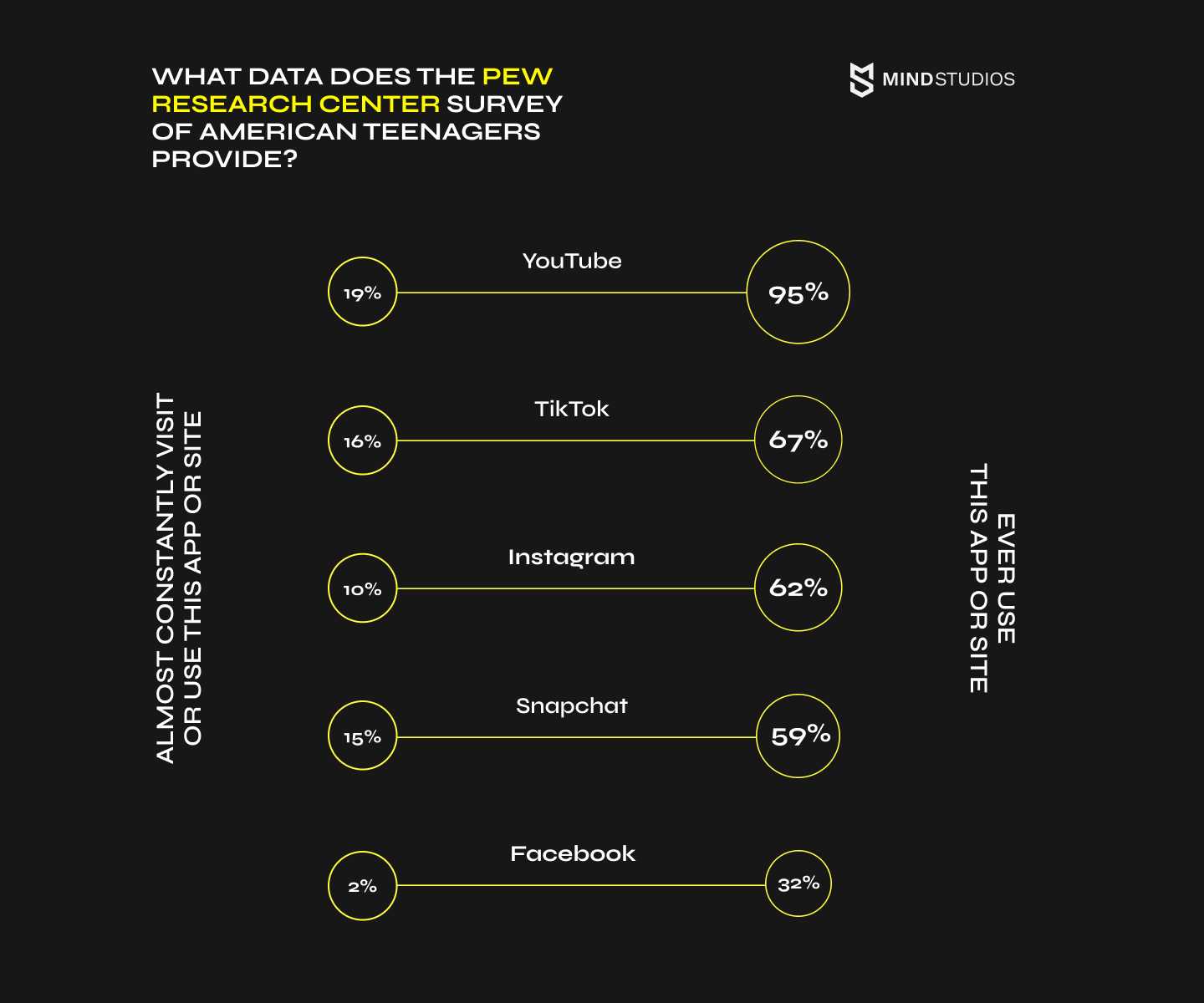
At the same time, the niche of social media still offers space for new players on the market, both in and, especially, outside the US. With an experienced team and thorough research, a savvy entrepreneur can snatch a chunk of audience, similar to how Snapchat did to Instagram when it launched.
Features for an app like Snapchat
Snapchat is built around the idea of fleetingness of all things — what’s with the snaps disappearing after being viewed or within 24 hours. This is a popular narrative in the lives of the younger generations in the 21st century, which makes the idea of Snapchat so lucrative: it’s very in line with current trends.
Add to the pot the idea of streaming into the world every life occurrence, from once-a-year NY Comic Con visits to mundane things like having cereal for breakfast, and you’ve got a recipe for success.
For those who plan to create an app like Snapchat, we’ve listed the features here we believe to be of importance.
Photo/video stories
At the heart of Snapchat and other similar apps is the media — photos and videos users share with the world. Visual information is easier to absorb for humans, which is probably one of the reasons Snapchat, Instagram, and TikTok bloggers gain a following faster than podcasters or text bloggers.
The cornerstone of Snapchat is the disappearing media. They have Snaps that disappear right after being viewed and Stories that stay out for 24 hours. (Instagram implemented the latter after Snapchat became a major hit and wouldn’t be sold to Facebook.)
This makes users come back regularly: if you don’t log into the app and check out your feed for a day, you might have missed something interesting or important.
Editing tools
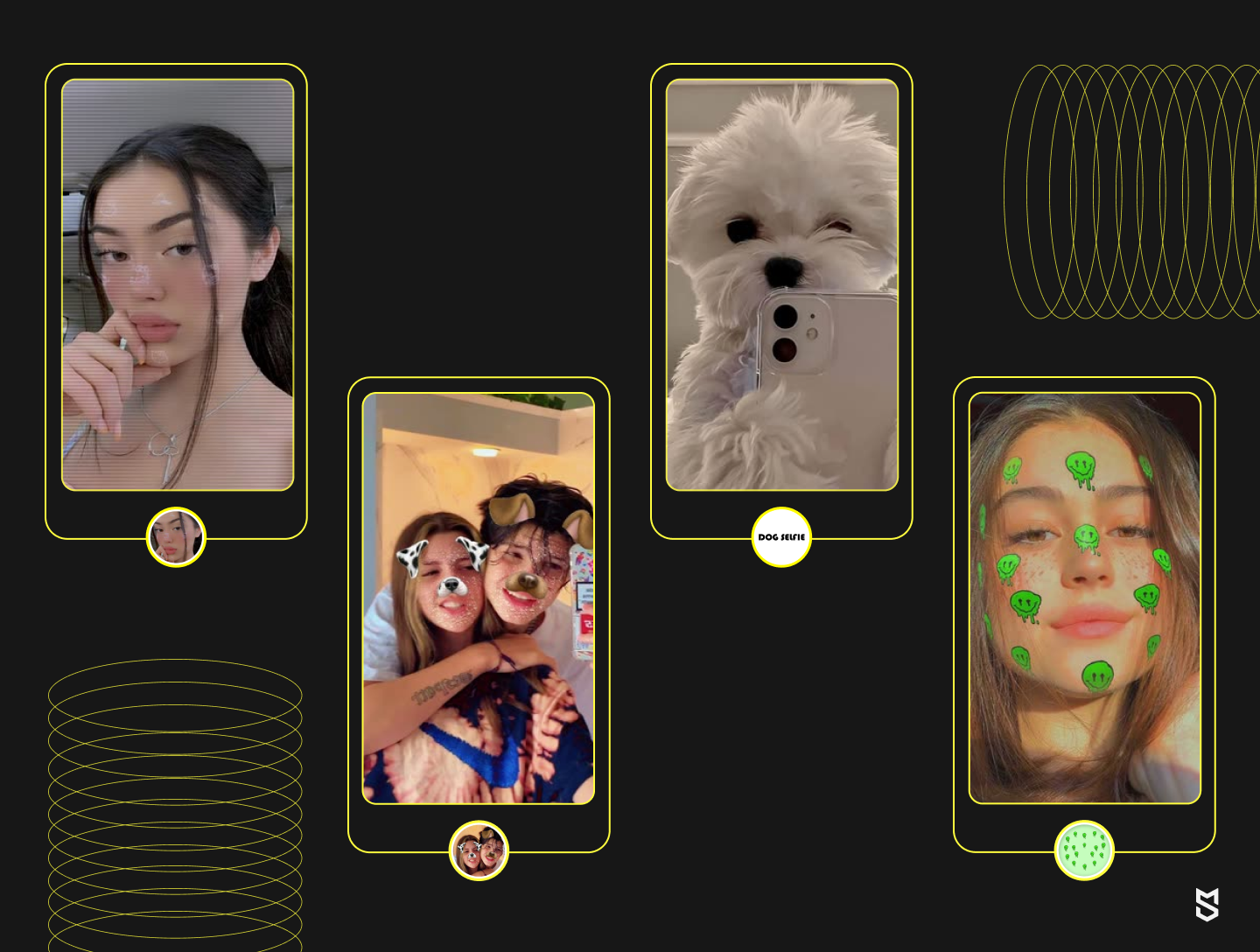
Filters, lenses, masks — all this makes it way more fun to use an app focused on sharing users’ daily lives with their friends and followers. Current technology allows implementing a wide variety of such tools, from drawing over videos to distortion lenses and adding wild makeup to a face via AR technology.
Snapchat, for example, has an interesting tool called Geofilters; these are filters that users can only apply when in a certain location and when their location sharing is on for the Snapchat app. Voice filters are another popular addition to Snaps.
A nice touch might be to offer users to upload their own filters and ready-made solutions for others to use (Snapchat does this, as does Instagram).
Discover new content
By using tags and topics, Snapchat allows users to find other users that post interesting content. In a special section of the app, users can search for keywords as well as browse popular content, editorial choice, and more. This is now a pretty basic feature for any social network.
Communication features: Chat
Snapchat is a social network so it’s a given that if you want to make an app like Snapchat, you need to add communication features. The simplest option is chat, which can be one or both of these two things:
- Direct messages between a user sharing their photo/video and their viewers
- Public comments where viewers can interact with each other as well as with the sharer
It’s also a valid idea to let users interact by replying to media with media, like a chain of photos/videos that “quote” other photos or videos. This might make for a fun challenge and a way for users to meet other users interested in the same things.
Another way to implement communication with strangers is by adding tags and themes so that it was easy to find users with similar interests.
Communication features: Audio/video calls
Audio and video calls are more complex than chats when it comes to app development, but it’s a feature well worth the investment. On Snapchat, users can make video calls at the same time with posting pictures to their feed. Users enjoy this feature because it allows them to combine two pleasant activities — talking with friends and sharing their life with followers.
Location sharing
Another feature that has become a standard in social media apps like Snapchat, location sharing allows users to let others know where they’ve found this or that interesting thing to show. It’s well used when streaming events — parties, parades, grand openings, etc. — and wishing to meet people nearby.
Technologies that are used to create an app like Snapchat
Snapchat itself is built on Python for backend and its apps’ front-end is Objective-C for iOS and Java for Android. These days, however, developers have a bigger selection of technology to make a Snapchat-like app. Here’s our list for this purpose:
| SNAPCHAT TECH STACK | |
|---|---|
| iOS app | Swift |
| Android app | Kotlin |
| Backend | Ruby on Rails, Elixir, Node.js |
| Database | PostgreSQL, MySQL, MongoDB, Redis |
| Servers | Dedicated OVH servers, Amazon EC2 instances |
| Data storage | Amazon S3, Google Cloud Storage |
| CDN services | Cloudflare, OVH CDN, Amazon CloudFront, Microsoft Azure |
| Streaming protocols | Apple HLS, MPEG-DASH, WebRTC |
| Load balancer | HAProxy |
| Sign-up / Sign-in | Facebook API, Google API, Amazon SES, Apple sign in |
| Notifications | Twilio, APNs notifications, Firebase Cloud Messaging |
| Chat | Twilio API |
| Location sharing | Google Maps API |
| Audio/video calls | WebRTC, RTMP |
| Search | Elastic Search |
| Face detection | Augmented Faces API |
Face identification algorithm for a Snapchat-like app development
One of the best things about Snapchat (and another feature Instagram copied from it) is its selection of unconventional filters and masks. In modern social media apps, you can add makeup to your selfie, change your eye/hair/skin color, distort your features to look like an alien or an animal, and more. These features utilize the augmented reality (AR) technology.
AR is a complex technology that can add visuals to the photo or video in real time. These days, it’s used in games, eCommerce apps, and yes, in social media.
Snapchat’s AR technology is actually originally from Ukraine: the company acquired a San Francisco based Ukrainian-founded startup Looksery in 2015 and used its technology to launch the Lenses feature.
How does AR work in apps like Snapchat? Two steps!
Step 1. Face detection
Looksery’s (and, consequently, Snapchat’s) technology employs Computer vision — a technology that, in layman terms, creates a 3D model out of an image. If you’ve ever seen a 3D artist at work, you might recognize images like this:
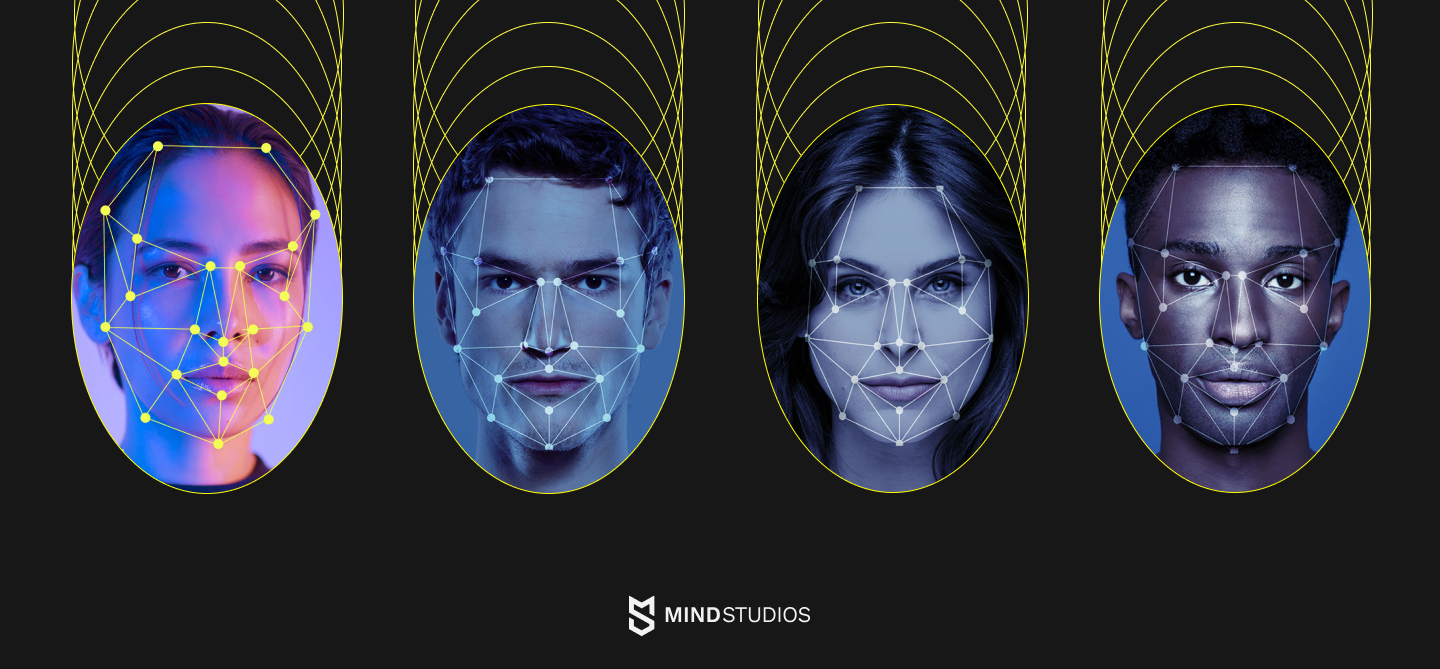
The CPU of your device uses the Histogram of Oriented Gradients and Support Vector Machine technologies to virtually place triangular shapes onto the image based on the differences in colors.
Then it compares the received data with the information on how light is reflected on human faces: how, for example, on frontal shots, the bridge of the nose is always lighter than the surrounding parts, and how the area around eyes is darker than areas around.
The comparison computes to the CPU the result — whether there is a face on the picture or not. If it is, the landmarks are extracted — the points that show facial features.
There’s a caveat in this technology: it works well with quality imagery. If your phone’s frontal camera takes poor quality photos (smudged or grainy), the face detection will not work properly and the lenses will not be applied as intended. Fortunately, most smartphones today have quite good frontal cameras as well.
Step 2. Applying lenses
Lens filters are built using a “standardized” face, the skeleton model, and machine learning technology. When the app has detected the user’s face and placed landmarks, it applies the selected lens with standardized face features. This, obviously, would not bring a good result to the user as we have different features.
However, with the use of machine learning and the knowledge of how our faces are formed on the skeleton and muscles, the app is able to adjust the standardized face to fit the face on the image. Also thanks to machine learning, the lenses can be properly applied to your face even if you turn this way or that, or generally move around.
It’s a complex process but with current technology, apps can perform it in mere seconds.
Snapchat’s Looksery is only one of the companies that work with such technology. If you speak to your developers, they might suggest other tech, or they might be able to build a face detection algorithm from scratch (although that would be expensive and might take a lot of time).
How much does it cost to make an app like Snapchat
The cost to develop an app like Snapchat will vary depending on several factors:
- Number of features
- Complexity of features
- Timeframe for launch
- Number of specialists involved
- Development team’s hourly rates
- External tech cost
The team’s hourly rates will most likely affect the overall cost the most, especially since the development might require up to a year or more time. One of the options to save on development investment is by hiring a team of developers with lower rates. This doesn’t necessarily mean they’ll be unqualified, too — the hourly rates differ from country to country. Hiring a team from Eastern Europe will cost you one third of what US-based developers will ask for.
For a full-stack team to make an app like Snapchat, you will need the following specialists:
- iOS developers: 1
- Android developers: 1
- Backend developers: 1–2
- UI/UX designers: 1
- QA engineers: 1–2
- Project manager: 1
And here’s a breakdown of development costs based on Mind Studios’ rates and rough estimates:
| Stage | Time, h | Cost, USD |
|---|---|---|
| Discovery and idea validation | 80 | 3,600 |
| Research | 40 | 1,800 |
| UI/UX design | 240 | 10,800 |
| iOS development | 960 | 43,200 |
| Android development | 940 | 42,300 |
| Backend development | 880 | 39,600 |
| Testing | 480 | 19,200 |
| Project management | 400 | 16,000 |
| TOTAL | 4,020 | 176,500 |
Since Snapchat employs complex technology for its lenses feature, the development cost might be a bit steep. However, depending on your particular market situation and number of local competitors, you might start by launching a Snapchat-like MVP and postponing the implementation of AR/ML-based features. If not, there are other ways to cut costs. Or you can also raise investments.
How to monetize an app like Snapchat
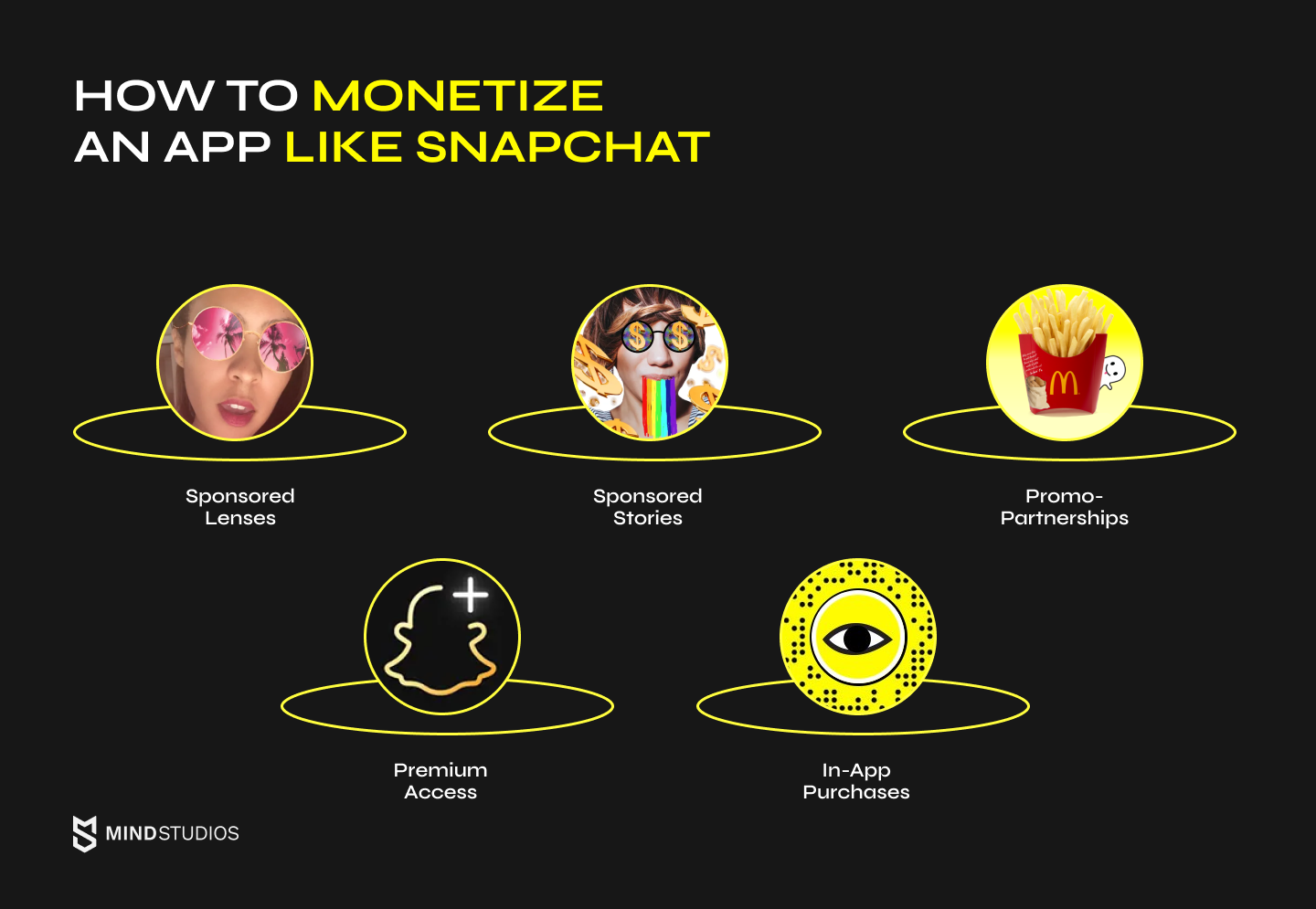
The issue of monetization stands quite acutely for Snapchat itself: in July 2022, the company reported a not insignificant decrease in revenue growth quarter-to-quarter. Although the company is still growing, it does so slower than expected, and this particular issue isn’t one to be overlooked.
To be fair, Snapchat wasn’t the only company that suffered lately: Meta’s social networks Facebook and Instagram also had some share price drops, as did Twitter. The reason for that is mainly the changes in Apple’s policies towards user tracking the apps can use for advertising purposes.
There are several ad-related features Snapchat stands on:
- Sponsored Lenses. Brands like Michael Kors and Taco Bell advertise on Snapchat by paying for their own customized lenses
- Sponsored Stories. Same as with Lenses, but in a video-form
- Promo-Partnerships. Snapchat has partnered with Shazam, as well as a few sport organizations, allowing them to promote various sport events and new music hits via the lively Stories.
About 90% of Snapchat’s monetization depended on advertising by the time the Apple’s new policy was announced, so this decrease in growth isn’t really a failure on the Snap company’s side. The app’s monetization just needs to be adjusted to better reflect the market reality.
In addition to using ads for revenue, here are your possible options for monetization in an app like Snapchat:
- Premium access (freemium model), that would allow users to try new features and customized lenses
- In-app purchases for those talked-about lenses that would not be temporary, but, let’s say for a small fee would remain with a user forever
You can come up with more opportunities for revenue growth by brainstorming the issue with your development team.
How can Mind Studios help

As a software development company with many years of experience behind us, Mind Studios has a team that works with all kinds of projects and products.
In particular, we know how to work with streaming technologies for both audio and video, as well as with securing data — an issue many social network users care about a lot. We’ve executed our share of work in creating social apps with chats and video/audio calls as well. You can check some of our projects in our portfolio.
We’re quite confident in our ability to build a social media app like Snapchat.
Final thoughts
The idea of self-destructing messages and media wasn’t something obviously lucrative even a decade ago. For Snapchat founders, it was a gamble. However, they’ve paved the way for this trend, and now, it seems overwhelmingly sensible for people to use apps and features that only offer a glance into their lives for a moment. Now you see it, now you don’t.
Snapchat’s user base mostly consists of teens, but it doesn’t mean that other demographics are uninterested in a similar app. Also, upon close examination and after a thorough analysis, you might find that even Snapchat’s loyal users see something lacking in it — and then, you can offer them a solution.
The important thing is that Snapchat-like app development is a venture that has high chances of success these days, and if you want to take advantage of this trend, it’s better to jump on while it’s here.
Get in touch with Mind Studios’ team for a free 45-minute consultation to get answers to your remaining questions, if you have any, or for an estimate of development costs tailored to your specific idea.

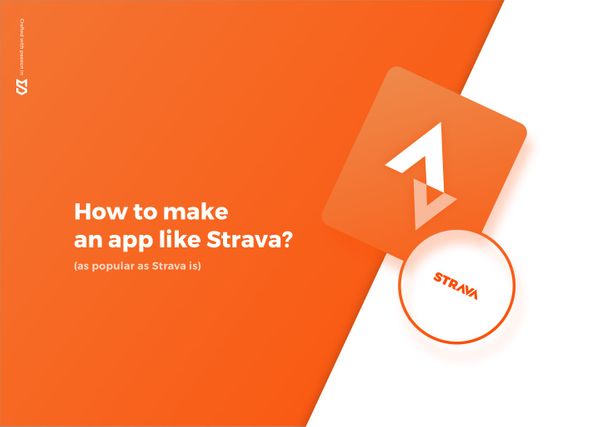
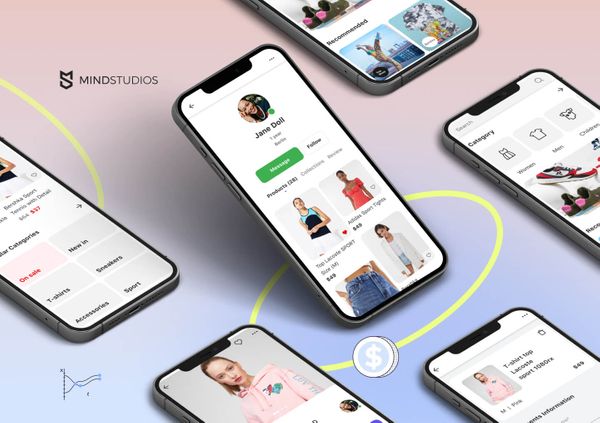
![How to Create an Photo Sharing App like Instagram [Guide 2024]](https://themindstudios.com/blog/content/images/size/w600/2022/08/01.-Cover--18-.jpg)
